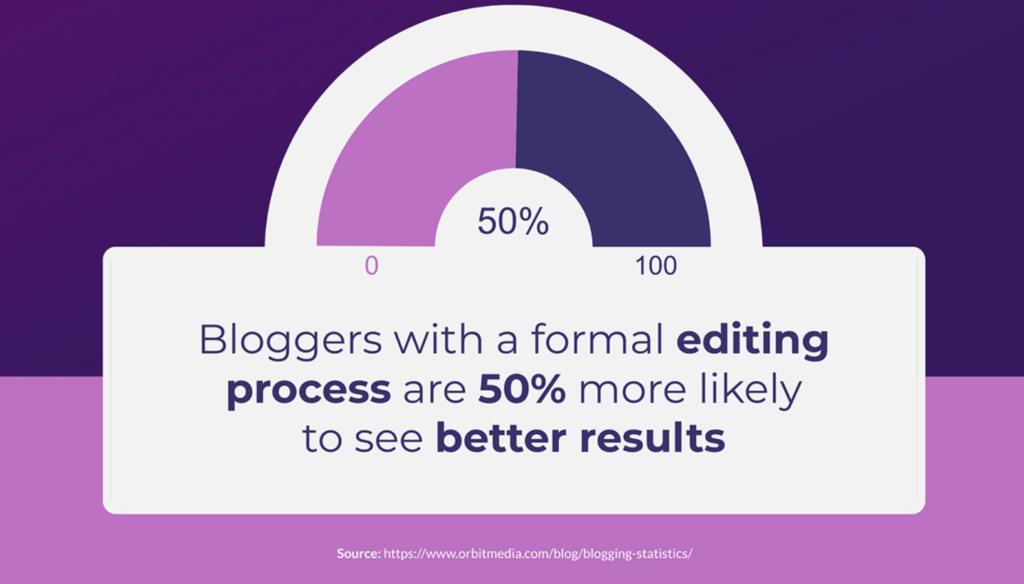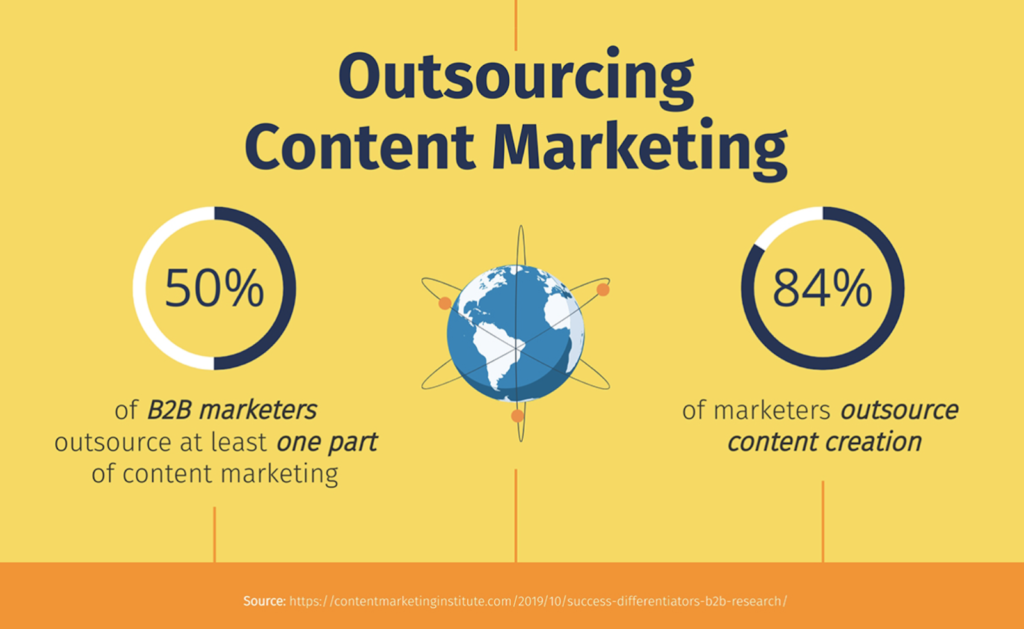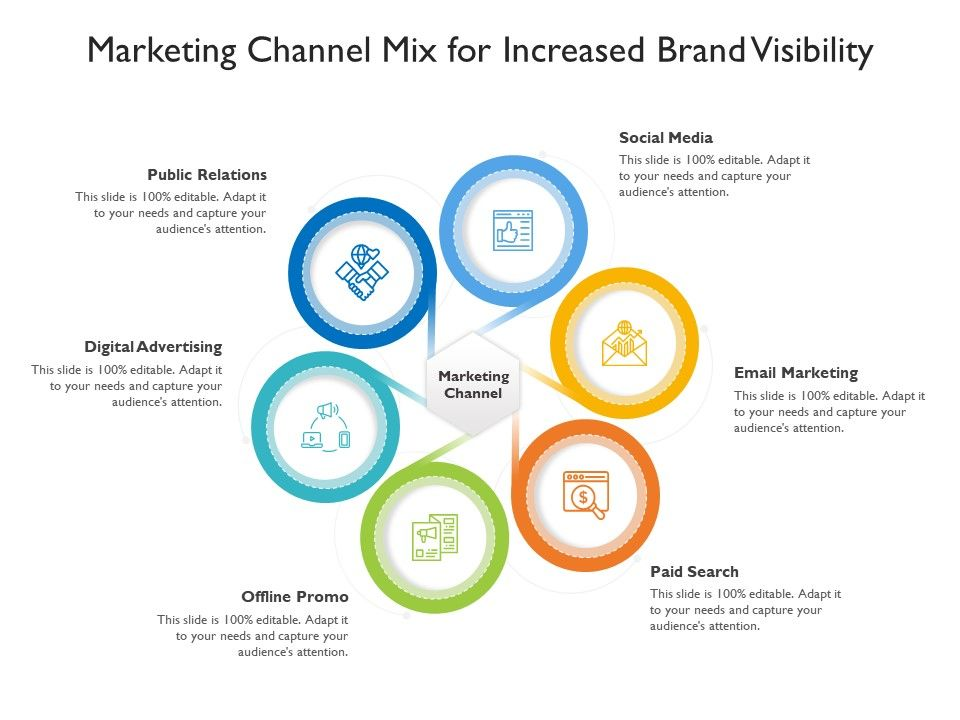5 Challenges Content Marketers Face Today and How to Overcome Them

Table of Contents
- Content Marketing Challenges
- How Can You Overcome Content Marketing Challenges?
- Important Content Marketing Problems and Hacks
- Content Marketing is Not Advertising
- Why Invest in Content Marketing?
- Key Takeaways
- FAQs
We see content marketing everywhere but fail to recognize it. Content marketing is the creation and distribution of relevant and valuable content in a consistent manner that helps businesses attract their target audience.
Instead of old marketing practices where all you do is pitch your product, content marketing is more focused on the customer than on the brand or product. It also helps create a loyal consumer base, increase sales, and keep costs down. But what are some content marketing challenges that marketers face when it comes to implementing a robust strategy? And, how to overcome these marketing challenges? Let’s find out.
Content Marketing Challenges
1. Lack of resources
Although producing content sounds easy, the challenge for marketers lies in creating good content, consistently. If you are the whole and sole of your business, this might seem like a big mountain to climb. Hiring the right person or team might seem challenging since creating and promoting content requires a very different skill set and some amount of investment. As seen in the image below, 78% of companies have only 1 to 3 people in their content marketing team. Given the number of elements that go into creating compelling content, that is not enough.

2. Quality matters
Creating quality content is one of the key challenges marketers face today. These days, users quickly point out errors, and thus, brands need to be alert. A good way of doing so and ensuring quality is to have an editor. However, one lapse can often lead to users losing trust in what the brand has to say. People are often not forgiving, especially now in the digital age. They will voice their opinions, and as a brand, you need to have the capacity to deal with such situations. As seen in the image below, content operations with a formal editing process in place see better results.

3. Competition galore
When you jump on the content bandwagon, you will see that the competition is intense. Whatever you think of, people have already written or talked about it. Therefore, coming up with new ideas is more challenging than ever. This competition poses a major challenge for marketers. If you want to develop better quality content compared to your competitor, you will need the resources. So allocate them. Apparently, content marketing accounts for 26% of the total marketing budget of B2C Marketers.
4. Embrace paid promotions
There is nothing wrong with relying on organic traffic on your blogs or social media channels. However, the content landscape has shifted so rapidly that almost everyone does paid promotions. Firstly, because it is not as expensive as it used to be. Secondly, it has an easy user interface that anyone can operate. Organic traffic will get you going for a while, but if you are trying to stay ahead of the competition and expand, you need to explore paid promotions and see what works best for you.
5. Unrealistic expectations
Content marketing is a long-term play. It requires time, effort, energy, and resources. Being consistent with these elements and producing top-quality content can fetch you positive results over time. Before you begin setting up a content workflow, you must define these goals. Remember that it is only after you make 24-51 blog posts, you can expect your traffic to increase by an average of 30%, and publishing 16+ blog posts per month results in 4.5X more leads when compared to publishing 0-4 monthly posts.
Overcoming Content Marketing Challenges
1. Accumulating resources
Did you know? Of all B2B marketers, 91% claim that they do content marketing. Why? Because it works. So, either you need to create quality content regularly or hire someone who can. You could either outsource or create an in-house content team. Each option comes with its advantages and disadvantages. For instance, when you outsource your content needs, all you need to do is pay them and explain what you require, and they take care of everything while you can concentrate on your business. Additionally, you can increase or decrease your budget based on the results you are seeing. But if you hire a subpar outsource agency, it might so happen that they miss schedule or create low-quality content.
You can then hire an in-house team, where you will need a writer, social media manager, graphic designer, and more. This means getting additional funding to cover the expenses of all the resources you may need. This is slightly less flexible as your needs could change over some time, and having an in-house team means having certain fixed payouts that you can’t ignore.

2. Be on platforms where your customers are
Content marketing doesn’t come with guarantees. But, to make the most of it, you need to make sure your content is top-notch and delivered to your prospects at the right place and time. Put your best foot forward and provide content on platforms where your customers are. For example, you can answer quora or do a guest post on a blog your customers often visit. You can show them ads when they are actively searching for something you can offer, or you can let your blogs bring them in. Did you know that according to HubSpot, marketers who blog consistently are 13 times more likely to see positive ROI? As seen in the image below, it is essential to meet your customers at different points of the buying journey by learning all about them.

3. Being unique is not impossible
Being unique is tough, especially when surrounded by millions of content pieces. But it isn’t impossible. You can view your brand as a separate entity by setting a brand tone and developing a strong brand personality. You can construe what your brand might say by creating a handbook of tone, colors, vision, and ideas. Be consistent with this handbook, and soon, you’ll have customers who will recognize your brands’ quirks anywhere.
4. Budget your ad spends well
Many variables come to play when developing a social media advertising strategy. They include:
- Budget
- Target market demographics
- Typical social media habits of your target group
- Type of content
- Device compatibility
- Your goals for your business
Paid promotions are often trial and error. Note the results you get for the amount you spent and then decide if paid promotions work for you. However, you must set goals before you go ahead and create ads. For instance, do you want more followers on social media? Because on Twitter, 94% plan to purchase from a business they follow. Start with a minimum investment. Get the hang of it. See how it works, and only then think of increasing your budget.
5. Set the right expectations
Whether it’s you who are impatient or your partners, it is essential to understand that content marketing takes time. You cannot publish a blog today and expect abundant traffic tomorrow. 86% of marketers say that they successfully reached their brand awareness goals through content marketing. How? Because they were patient. Have realistic goals and make sure you achieve them. If any of your content marketing exceeds your expectations, aka goals, see what you did differently. Use that strategy in your other campaigns.

Important Content Marketing Problems and Hacks
While these are some of the most common content marketing challenges, there are other non-resource, non-environment, content creation challenges to be wary of. For example, how do you create content for a lesser-known niche or an emerging industry? Here are a few not-so-usual problems and some content marketing tips for small businesses and more prominent brands.
Understanding the buyer persona
A lot of brands mean different things to different people—for example, the iPhone.

While one can generally decipher the core benefit to the customer that influenced the purchase, there are some cases wherein understanding the customer’s viewpoint can get complicated. In marketing teams, sometimes the segmentation of the customer or understanding the buyer persona is challenging. While as a product-centric company, that is generally not a problem, it can be a content-centric marketer.
How do you solve this challenge that marketers face? You ask your customers. Just like customers learn in different ways–some by reading, some by listening, and some by doing, they also prefer to consume your content in different ways. The easiest way to figure out how you can better serve them is to ask. Remember how you come across YouTube surveys now and then? Remember how when filling a job application, the company asks how you found out about the opening? Try something similar. Your company will love you for it. And so will your customers. Who minds being spoiled a little?
Making the most of your content
This is one of the content marketing challenges you may not even know you could be facing.

Calculating the ROI of your content marketing is at best circumstantial (we get into this later), but even worse is not using your content to your best advantage. For example, a B2B company with 1000 followers on LinkedIn, an email subscription base of 2000, and about 500 employees. What happens if you share insightful content only on Linkedin? What if you share it only on Linkedin and on email? Can you do better? Try sharing it on all platforms (including your internal emails platform with your employees) multiple times. This ensures that your content has not just reached your audience but that they have seen it.
Of course, even after you repurpose your content and remold it for different platforms, it may be missed, but are the chances of being seen not higher when you have posted everything on all platforms? While you cannot get repetitive, that would more or less kill any interest in your brand; do you know how many times you need to bombard your customer to be sure he has seen and been delivered the intended value?
To the uninitiated, repurposing or content recycling is the act of reusing the critical elements of a flagship content piece, say a blog or a carousel post on social media, and transforming it into a new format to expand the content’s reach. This is exceptionally useful with platforms where you can measure the reach of your content, such as social media and even email, as long as you have a CRM tool that can highlight key metrics such as the number of people who opened the email and more.

To summarize, when you have a great or even a half-decent content idea, ensure that you and your customers get value out of it. Share it on all your platforms in a suitable format and then repurpose and share it again after a month or two. You can repurpose it across formats such as infographics, podcasts, and even blogs for maximum exposure.
Getting buy-in with stakeholders
Do you have trouble seeking approvals from your management or other stakeholders? This is a common challenge that marketers face. While their concerns are genuine, given how it is difficult to measure the ROI of content marketing, creating smaller milestones can help. Like on social media where you have specific goals for each post, such as highlighting a key feature, increasing engagement, building interest or hype for a new product about to be launched, even content delivery on other platforms such as blogs and emails can have a simple goal. While at times the goal can merely be brand awareness and other times the goal can be increased sales (especially when you have a discount code to go with), the content also has the job to increase consideration of the product.
When you create a content calendar, regardless of the platform, allot tinier goals or milestones to all your pieces of content. These small goals connect to the overall content strategy and are easier to push in the long run.
Aligning homegrown content to the buyer journey
It is challenging to create content that pushes consumers on the buyer’s journey. While having great CRM, website chatbots, and automation strategy to convert customers helps, the need of the hour is to modify the narrative based on the phase of the buyer journey. It becomes essential to figure out how different marketing channels are being used in different ways by your customers to understand you better.

As a golden rule, PR and paid promotions generally help build brand awareness, blogs, emails, and product videos help improve consideration, and case studies or discussions with your sales team generally assist with making the final decision. Focus here on changing the narrative based on the platform and adding value for the customer. For example, rather than saying you have a great feature, an earlier used customer feedback form that highlighted how many customers loved a specific feature and why (with the customer testimonials) would help educate consumers on what they should be looking for.
Content management processes
While a lot of progress has been made on the concept of content management, it has not culminated scientifically yet. While we have the prowess to create and continuously modify million-dollar ERP systems, an effective content management system that manages and creates content with speed, volume, and quality similar to how an ERP manages to take the company processes online and operational is yet to be made. However, an organized approach to content management is in the offing and helps keep things organized as long as the content aligns with the key brand or company goals.

While these are some of the other challenges marketers face when it comes to content marketing, other content marketing challenges related to branding and influencer marketing appear now and then. Especially in the age of outsourcing and umbrella brands with multiple sub-brands, managing an even consistent brand tone across channels gets difficult.

Content Marketing is Not Advertising
While these are some of the other content marketing challenges that marketers face daily, probably the most rampant of problems with current content marketing trends is how companies make it all about themselves and not the customers. Company websites often capture information like where their offices are, where their factories are, and the numbers of employees they have while highlighting their product portfolios and key company values. However, while this tells the customer a lot about the company, it fails to answer the customers’ core question.

Yes, today’s customers, especially Gen Z, are brand conscious. They care about sustainability and brands being true to their values, but what good is your website if the customer care number is hidden in some obscure corner the customer has to click ten times to reach? The issue here is not of knowledge but mindset. Many companies fail to understand that content marketing and advertising are two different things and need to be handled differently.

Why Invest in Content Marketing?
Are you now wondering why companies still invest in content over product feature selling despite these content marketing challenges? This is major because, in today’s competitive landscape, customers are wary of sales pitches.
In the era of influencer marketing and omnichannel presence, what works is adding value to the customer. When you do that, customers come to you not just because of your product but also because you have built trust. This is the first step to increasing brand loyalty and word-of-mouth marketing.
Further, this word of mouth helps you reach customers who avoid ads and increase traffic and conversions. Thus, your content is not just the foundation of building a connection with your customer but also the platform that supports your marketing gimmicks. How else would pulling off such cheeky yet viral ads work?

Conclusion
We hope this article has given you the answers you have been looking for about content marketing. The bottom line is, don’t opt for content marketing for the sake of it. Instead, know the ins and outs and have reasonable goals in place to help you achieve things. Finally, don’t shy away from experimenting. There are a ton of content generator tools that have come into the market, and you should definitely try them.
Key Takeaways
- Content marketing helps you build brand awareness, word of mouth, and brand loyalty.
- Content marketing is a time-consuming process that has guaranteed results
- Content generator tools can help find creative content ideas
- An effective social media marketing content idea can do wonders for your brand. Remember the sleepy owl video ad you could enjoy on mute?

- The best of all content strategy tips? Make your content evoke an emotion. If you can make your customer laugh or cry, you will be remembered and make a sale when you least expect it.
- Knowing your customer is as important as ever: Be on their platforms, stand out, and hire a team that can help you stand out.
FAQs
The key challenges marketers face are:
Consistent creation of relevant and exciting content
Understanding and connecting with different consumer segments
Producing content across multiple formats
Measuring the ROI of content
Getting the buy-in from all stakeholders involved
Here are some content marketing challenges are:
Content marketing is time-consuming and only measurable in the long run
In a highly competitive industry, coming across a unique content marketing idea can be quite a challenge
Evaluating the success of content based on brand metrics like awareness, reputation, and loyalty is complicated
A content strategy should first and foremost have a tangible goal in mind. It should be deeply rooted in timeless consumer insights and should have a foundation in a strong content marketing idea that can evoke an emotional reaction.
An effective content strategy helps keep customers interested and engaged, which also helps improve brand awareness, consideration, and market share.
Many tools like SEMrush topic research tool, SEMrush marketing calendar, Google trends, Grammarly, Sparktoro, and more can help with creating content.
While you can do some research online to find common topics of interest without a lot of competition using Google Trends and YouTube, you can also come across creative content ideas by brainstorming in groups, having a walk and talk session, or even watching funny videos.
As brands start communicating with customers on multiple platforms and competition increases, content marketing will become increasingly personal. Content rather than now focusing on products will now focus on the makers, on the experience, and on building a sense of authenticity.
Latest Blogs
Explore how Google’s 2025 AI search updates triggered ranking chaos. Learn actionable strategies to adapt your SEO for AI Overviews, zero-click searches, and SERP volatility. Stay ahead now.
Learn how to rank on AI search engines like ChatGPT, Perplexity, and Gemini by optimizing your content for authority, structure, and relevance. Stay ahead in AI-driven search with this strategic guide.
Explore the best healthcare SEO services for your medical practice. Improve online visibility and effectively reach more patients in need of your services.
Get your hands on the latest news!
Similar Posts

Content Marketing
4 mins read
11 Best B2B Content Marketing Agencies for B2B Companies in 2024

Content Marketing
5 mins read
Top ecommerce Marketing Agencies with Proven Strategies for 2024

Content Marketing
5 mins read